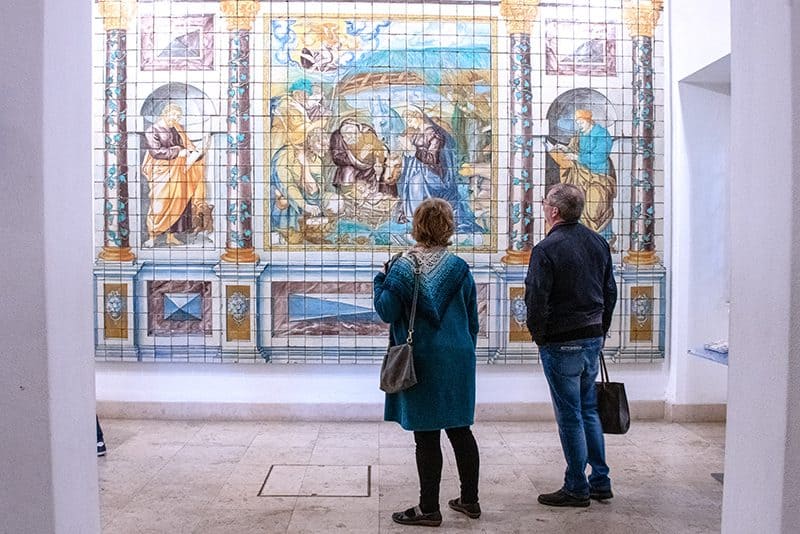Last Updated on January 5, 2025

Video Below
By Jim Ferri
For many travelers, Lisbon’s National Tile Museum (Museu Nacional do Azulejo) doesn’t sound very exciting. At least, it never did for me during years of travel to the Portuguese capital.
But I was astounded when I finally visited it during my last visit to Lisbon. I found that it’s not merely a museum showing tiles; it’s a unique art museum in its own right. In fact, you won’t find anything like it anywhere else in Europe or, perhaps, the world.
The home of the Museu Nacional do Azulejo is the early 16th-century Madre de Deus Convent in eastern Lisbon. Enter and you’ll be on a journey through the history of tile from the 15th century to the present. It’s a spectacular collection, so much so that it’s one of the most important national museums in the country. In addition, the convent’s cloisters provide an incredibly stunning setting for the beautiful collection.
The Collection of the Lisbon National Tile Museum
The collection in the Lisbon Tile Museum takes one through the history of azulejos tiles in Portugal. It ranges from the Moors’ introduction to the influence on the artistry of the Spaniards and finally to the development of a unique Portuguese style.
The church of the former convent is a treasure of Portuguese baroque splendor. Step inside and you’ll find beautiful gilded and carved wood, paintings, and tile panels. Its grand Rococo altarpiece was added in 1755 following the “great Lisbon earthquake.” The earthquake was the greatest in history, and destroyed the city and killed 12,000 in the Portuguese capital alone.
You’ll also find one room devoted to just one tile panel. It’s an incredible 75-foot (23mt)-long panel showing 9 miles of the Lisbon skyline before the earthquake. Created in 1700, its 1,300 tiles show some monuments that no longer exist and others you can still visit today.
An additional bonus of a visit to the museum is its excellent restaurant. Plan to have lunch here since the menu is a bargain. Not surprisingly, its walls are 19th-century kitchen tiles, depicting wild boar, pheasant, and other game.

Leave a Reply